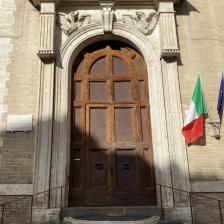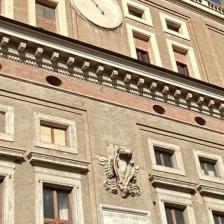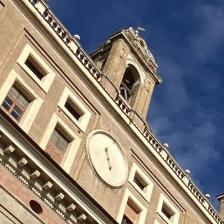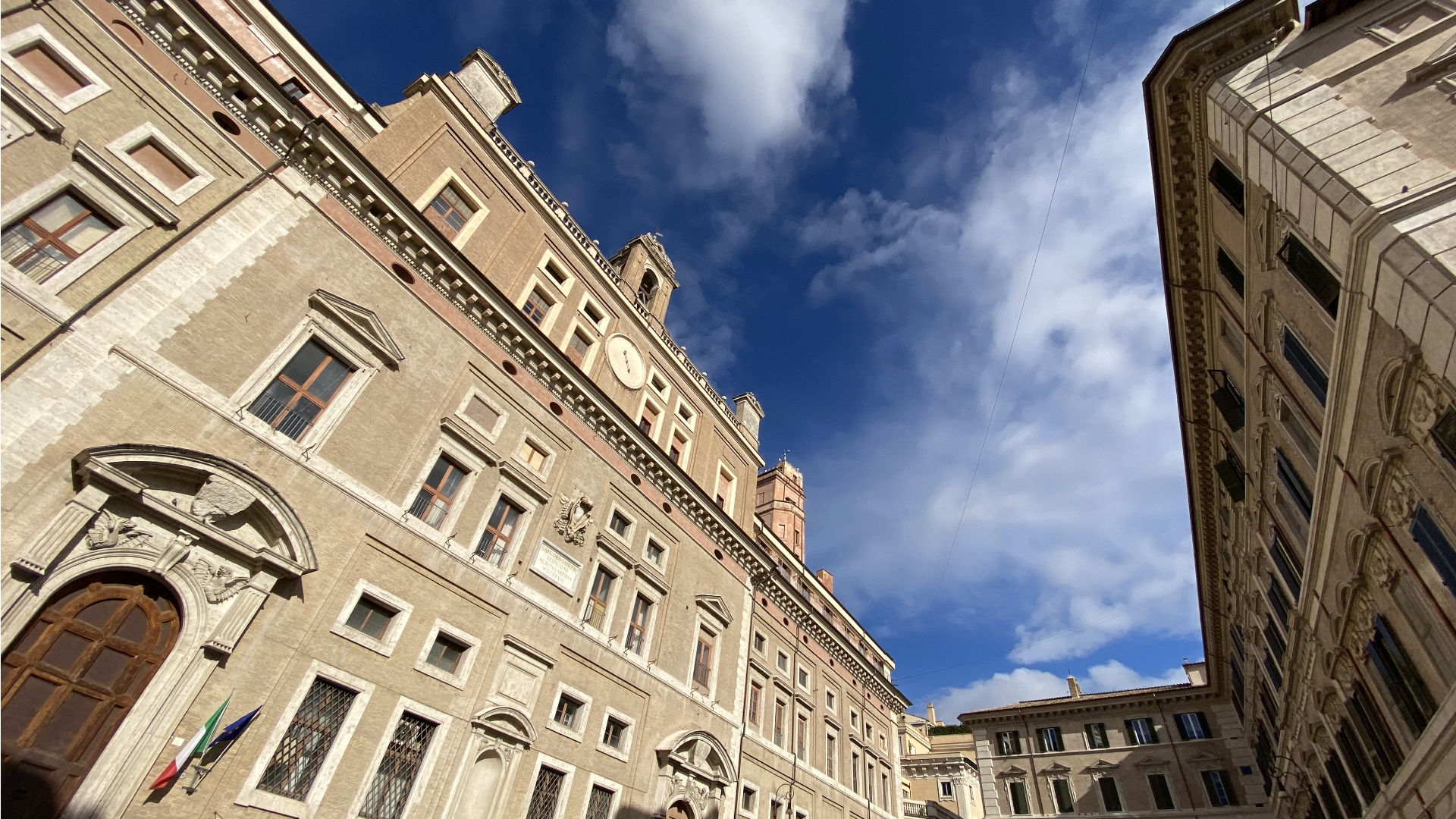
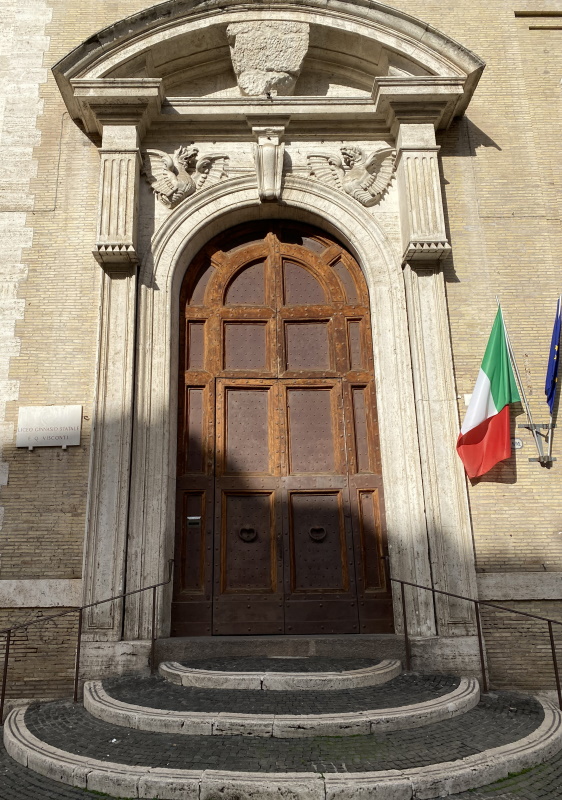
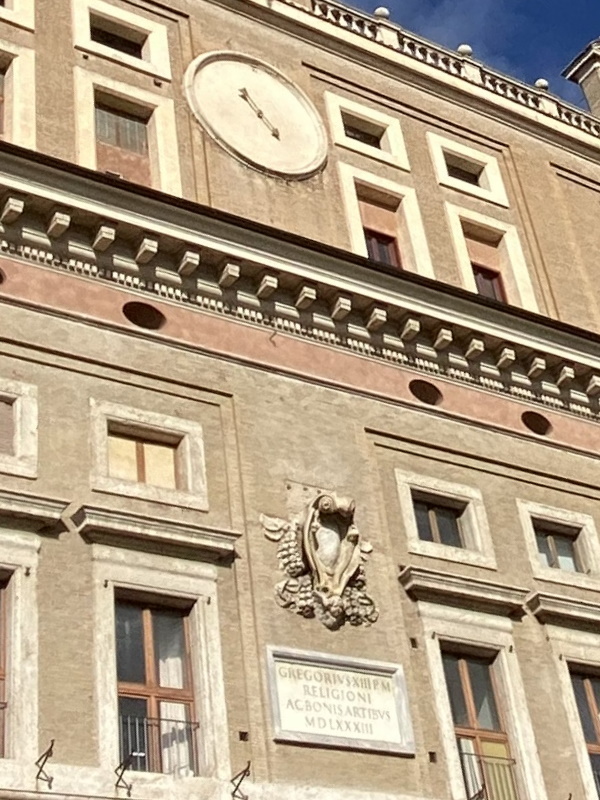
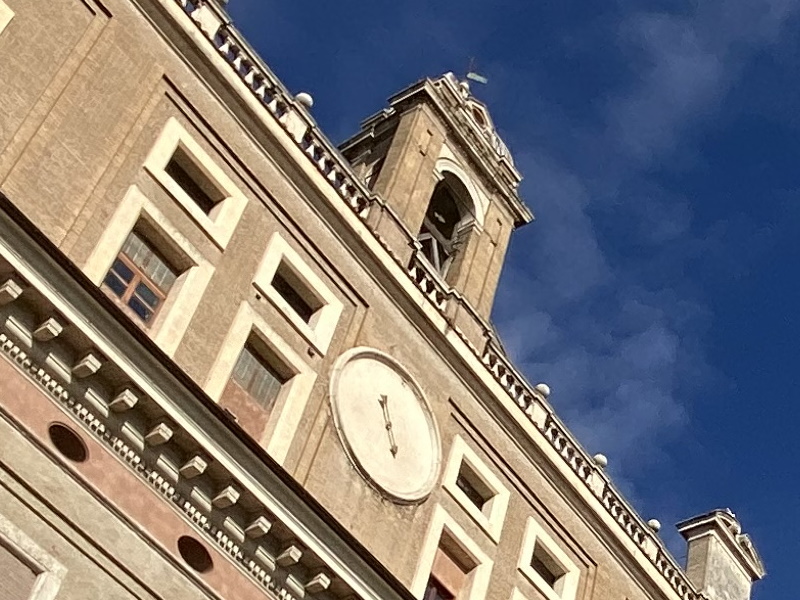
Located a few steps from Piazza Venezia, the Palazzo del Collegio romano was built between 1582 and 1583 at the behest of Pope Gregory XIII Boncompagni. He wanted to offer a suitable place to those who aspired to serve in the Society of Jesus, establishing the school founded in 1551 by Saint Ignatius of Loyola.
The construction of the building was long attributed to Bartolomeo Ammannati, already the author of the Palazzo Firenze project, but the building is more likely to be considered the work of Father Giuseppe Valeriani, a Jesuit painter, and architect, who also worked in the nearby church of Jesus.
The palace, which has a monumental terracotta facade, is divided into three main bodies surmounted by a tower for astronomical observations, erected in 1787. The central body, higher than the other two, is crowned by a balustrade on which are two aedicules for the sundials; in the centre is a bell tower with a small dome. Two magnificent portals bear the heraldic dragons of the Boncompagni family. On the first floor, however, you can admire the coat of arms of Gregory XIII, under which the inscription GREGORIUS XIII P.M. RELIGIONS AC BONIS ARTIBUS MDLXXXVIII recalls the foundation of the college.
The clock in the centre of the third floor once announced the exact "official" time to all Rome's clocks.
In the grandiose complex, which occupies an entire block, including the church of Sant'Ignazio di Loyola in Campo Marzio, important cultural institutions had their headquarters: the former Kircherian Museum, the Astronomical Observatory of Father Secchi, which, in 1938, was transferred to the villa in Parco Mellini in Monte Mario, and the Jesuit Library, which, with its 50,000 volumes, formed the first nucleus of the Vittorio Emanuele II National Central Library, now located in Viale Castro Pretorio. It was also home to the Luigi Pigorini Prehistoric-Ethnographic Museum, dedicated to the authoritative palethnologist from Parma.
Currently, the building houses the state high school gymnasium named after the archaeologist Ennio Quirino Visconti, the oldest in Rome, established immediately after the capture of Rome in 1870, and the Ministry of Culture.
Inside the Ministry block, the BiASA, Library of Archeology and Art History, owns the Crociera and the Sala della Lettura.
The Church of Jesus
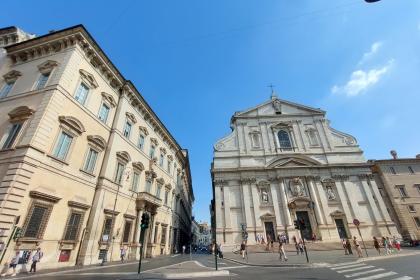
 Condividi
Condividi
The Church of St. Ignatius of Loyola
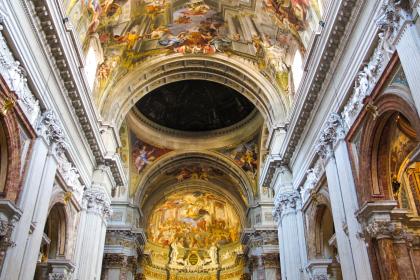
 Condividi
Condividi
Piazza Venezia
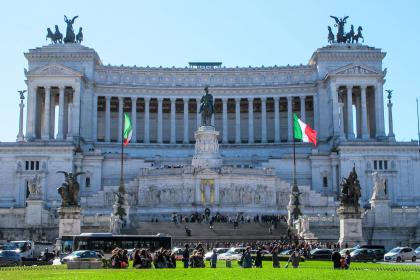
 Condividi
Condividi
Information
 Condividi
Condividi
Location
To find out about all accessibility services, visit the Rome accessible section.












































